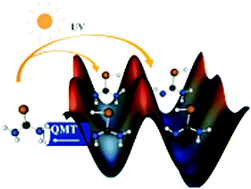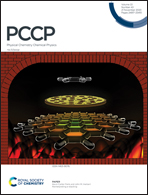Chemical reactivity from the vibrational ground-state level. The role of the tunneling path in the tautomerization of urea and derivatives†
Abstract
Recent developments of low-temperature techniques are providing valuable knowledge about chemical processes that manifest in the quantum regimen. The tunneling effect from the vibrational ground-state is the main mechanism of these reactions, which usually involves the motion or transfer of hydrogen atoms. Theoretical methods can enrich the information supplied by these experimental methods through an insightful analysis of the tunneling process. In this context, canonical variational transition state theory with multidimensional tunneling corrections (CVT/MT) can handle this type of reaction, and it has been applied to several systems within the small-curvature approximation for tunneling (SCT). This method is of proven reliability for polyatomic reactions occurring at room temperature and above, but no tests have been performed to check its performance when only the lowest energy level is populated. In this work, we compare SCT against the least-action tunneling (LAT) method to study the tautomerization and cis–trans interconversion reactions in the enol forms of urea, thiourea, and selenourea. To the best of our knowledge, this is the first time that the LAT method is applied to a polyatomic reaction occurring in the deep-tunneling region. The theoretical results indicate that the reaction mechanisms are controlled by tunneling. The SCT and LAT tautomerization reaction times are in good agreement with the experimental values; however, LAT seems superior to SCT for reactions (tautomerizations) that involve moderate reaction path curvature, whereas the opposite is true for reactions with small curvature (interconversions). These results led us to introduce and recommend the microcanonically optimized tunneling path that selects the tunneling probability as the maximum between the SCT and LAT tunneling probabilities.

- This article is part of the themed collection: 2020 PCCP HOT Articles


 Please wait while we load your content...
Please wait while we load your content...